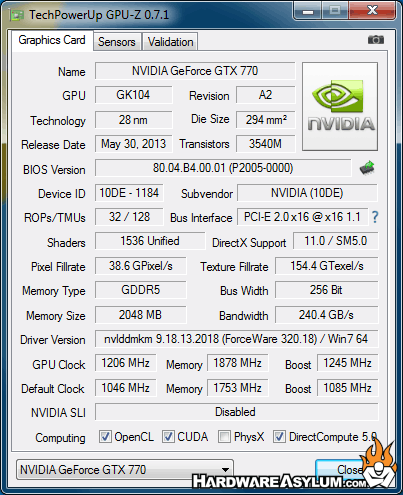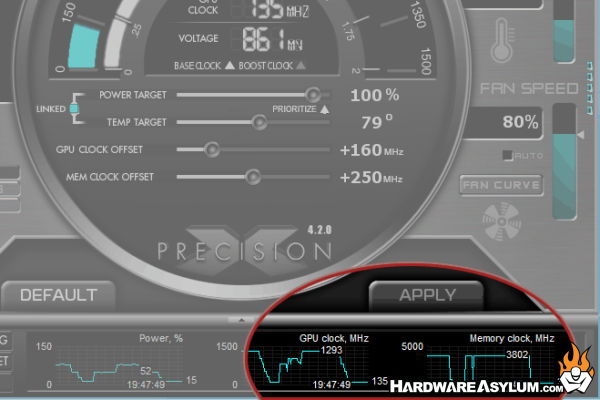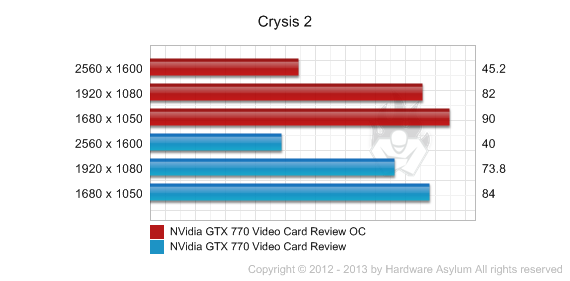NVidia GTX 770 Video Card Review
Author: Dennis Garcia
Published: Thursday, May 30, 2013
Overclocking
Overclocking the Kepler is a little different than what we have done in the past since there are no shader controls and you have to deal with the non-adjustable Boost Clock. For these tests we settled on a +160 boost on the core and +250 boost on the memory. That roughly translates into 1200Mhz Core and 1870Mhz Memory with a boost clock ramping things up to 1250Mhz, or was it?

During our benchmarking runs we left EVGA Percision running so we could monitor temps and core usage. After several runs we noticed something strange, it would seem that under load the core clock was boosting up to 1300Mhz. Memory clock would boost up to 1900Mhz. This is good news considering that GPU Boost 2.0 will actually scale higher if things are kept cool, ie run the fan higher.

When dealing with Kepler you have to expect the unexpected which also making comparing results across sites almost impossible. What more, if your room temperature rises during your tests then scores won't match up and you'll have to start over.
Ya that happened
Ya that happened




Overall a good boost across the board, keep in mind that overclocking is not guaranteed so your results may vary. Out of habit we cranked the fans up to 100% for these tests and given how GPU Boost 2.0 will scale with system temp it is a good idea to keep things as cool as possible.

